Stories about weapons. Armored car BA-64B
BA-64 - Soviet light armored car during the Second World War.
It was created in July - December 1941 on the chassis of the all-wheel drive GAZ-64 car using both the pre-war Soviet developments on all-wheel drive armored cars of the new generation, and using the experience gained in studying German trophy armored cars, such as seized near Moscow Sd. Kfz.221.
The BA-64 became the first Soviet serial four-wheel-drive armored car, remained the only vehicle of this class adopted by the USSR during the war, and also became the last Soviet classic-style armored car.
In total, during the mass production of the BA-64, from April 1942 to the beginning of 1946, 9110 of this type of armored vehicles was launched.
BA-64 was actively used by Soviet troops from the summer of 1942 and up to the end of the war, mainly as reconnaissance vehicles, but also for direct support of infantry in urban environments. This was greatly facilitated by the successful design of the machine-gun installation, which allowed to fire from the course on the roofs and upper floors of houses.
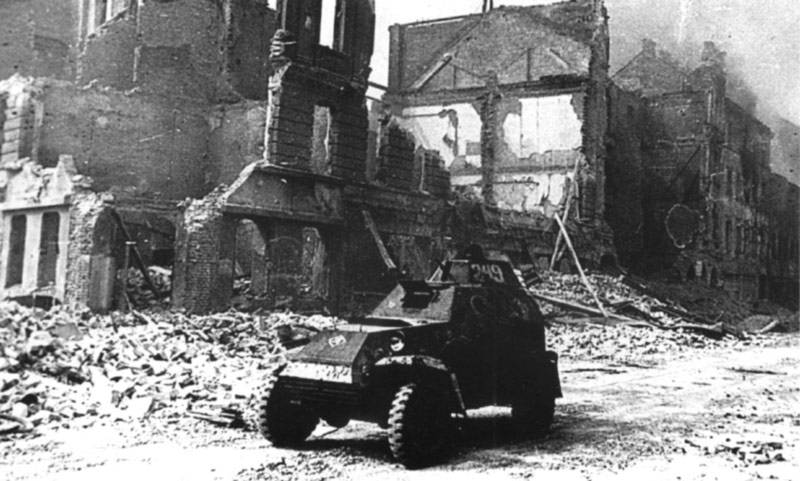
After the war, the BA-64 were used mainly as training and combat vehicles and were removed from the Soviet Army in the first half of the 1950-s. BA-64 was also supplied to a number of allied Soviet countries and on a small scale used by the DPRK army in the Korean War.
TTH:
Engine type: inline 4 ‑ cylinder carburetor liquid cooling
Engine power, l. with. - 50
Highway speed, km / h - 80
Cruising on the highway, km - 560
Suspension type - on leaf springs and hydraulic shock absorbers
Overcoming rise, hail. - 36
Breakable wall, m - 0,25
Overcoming ditch, m - 0,35
Overcoming ford, m - 0,9
By the beginning of World War II, the only light armored car in production in the USSR was the BA-20M.
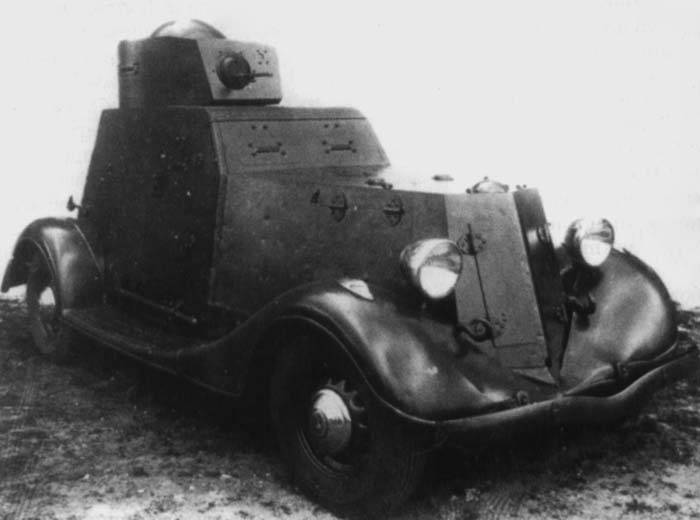
Created in the middle of 1930 on the basis of the GAZ-M-1 car, the BA-20 had become obsolete by the year 1941: its rear-wheel drive chassis did not provide sufficient maneuverability on rough terrain, and the armor that protected only from non-armored bullets did not meet the increased requirements on security.
From 1941 of the year, due to a reduction in the production of GAZ-M-1 and the transition to the release of a new four-wheel drive GAZ-64, it was decided to transfer the light armored car to the base of the latter.
Production of BA-64 was deployed on GAZ in April 1942, the first serial armored cars were assembled already in the same month, but at that time they were not accepted by military acceptance due to the lack of bullet-resistant “GK” tires. However, the first 35 BA-64 were taken by the military in early May.
One of the main problems of the BA-64 was the lack of lateral stability, due to the narrow GAZ-64 track gauge for this class of vehicle, combined with the relatively high center of gravity of the armored car.
In August, on the initiative of the design bureau, 1942 began work on creating a BA-64 modification with an extended gauge, and on September 26 the GABTU was submitted for approval to a plan for a radical modernization of the armored car and its testing program.
An improved model BA-64B was launched into mass production in 1943 year. A light army all-terrain vehicle GAZ-67B with a wider track was used as a base for it. This improved lateral stability compared to the original version of the BA-64. Turret machine gun DT was replaced by a tower. The serial release of the BA-64B continued until the year 1946 inclusive.
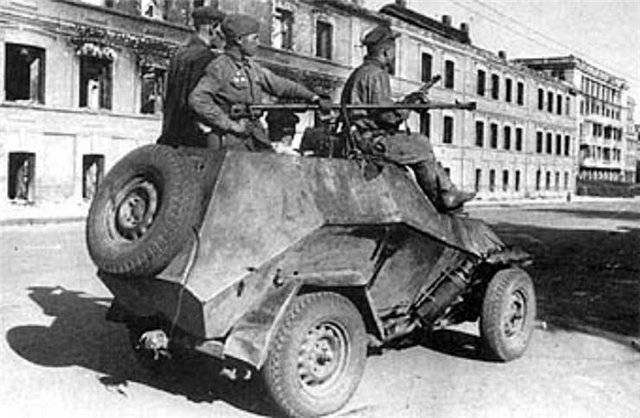
Modifications:
BA-64 is the original model of an armored car with a rotating turret with DDT turret mounted on the GAZ-64 chassis.
BA-64B - an upgraded version of the armored car on the chassis GAZ-67 and GAZ-67B.
BASH-646 - the staff version of the armored car with different versions of the armored hull.
BA-64D (D - designation for DShK) - modification with 12,7-millimeter heavy machine gun DShK. Sometimes referred to as BA-64K or BA-64DR.
BA-64E - an armored personnel carrier for six infantrymen.
BA-64B and BA-64Г (sometimes called BA-64ZHD) are two versions of armored tires based on BA-64, produced by the Vyksa Steel Works and GAZ.
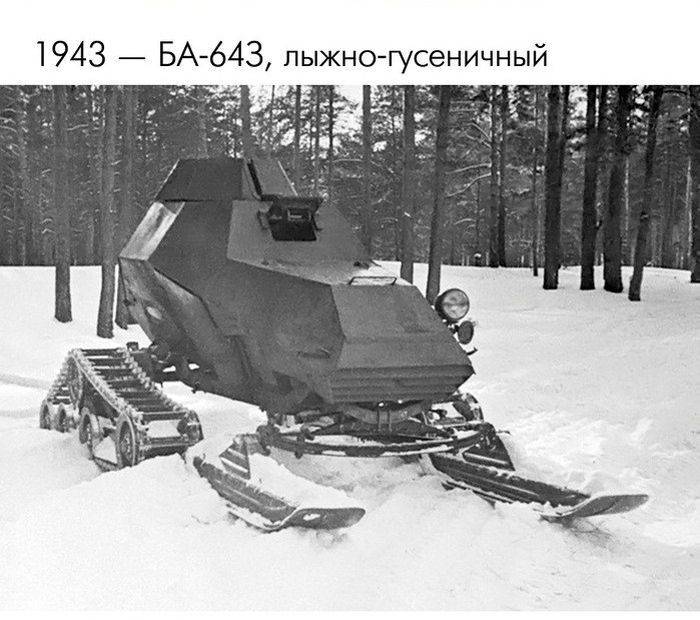
The BA-643 (sometimes called the BA-64X) is an experimental half-track snowmobile based on the BA-64.
BA-64 had anti-bullet armor protection. The BA-64 armor hull was assembled by welding from thick sheets of armor steel, on early-release machines, 4, 6, 9 and 12 mm, on all subsequent 4, 6, 7, 9 and 15 mm.
In cross section, the body had a hexagonal shape, all its surfaces were placed at angles of at least 30 ° to the vertical. The frontal part of the body had a stepped shape and on the BA-64 was 12 thick, on later-release machines it was 15 mm, placed at an angle of 40 ° to the vertical.
The lower part of the hull was made of tilted armor plates with a thickness of 30 mm, inclined at 9 °, on late-release machines - 7 mm. The upper side plates were also inclined at 30 ° and had a thickness of 6 mm in the area of the engine compartment and 9 mm - in the area of the command and control compartment.
The body feed consisted of an 9-mm top sheet, sloped at 30 °, and an 6-mm bottom, which had a slope at 35 °. The bottom and the roof of the hull had a thickness of, respectively, 4 and 6 mm.
This level of booking provided the vehicle with protection from conventional rifle 7,62-mm bullets - from all distances, armor-piercing - only for the department of control and the fighting compartment. From the 12,7-mm of conventional bullets, the upper frontal sheet protected at all distances, while the other frontal sheets protected only at distances greater than 500. Only the upper frontal sheet protected against armor piercing 12,7-mm bullets, and only at distances greater than 800. M. [31 ]
On the BA-64B, the thickness of the bottom sheet was increased to 11 mm, to 7 mm - the thickness of the air intake louver, to 8 mm - the air intake cover in the engine compartment roof, to 11 mm - the lower stern armor plate, while the top thickness was opposite, reduced to 11 mm
In addition, the body of the BA-64B was made of armor steel grade 77, characterized by greater bulletproof.
The landing and disembarking of the crew on all modifications was carried out through the control compartment doors, in addition, the commander could carry it through the top of the tower.
The armored car tower had an octahedral shape in the shape of a truncated pyramid, open at the top. The walls of the tower were inclined at 30 ° and had a thickness of 9 mm on machines of earlier releases, and on subsequent machines 10 mm.
The tower was placed on the rotary column, which rested on the floor of the fighting compartment, it did not have on the machines of early releases of communication with the hull roof, but on the machines of later releases, four rollers were put on the tower to increase stability in the tower.
The turn of the tower was carried out manually, pushing the arc connecting it with the supporting column. For fixation in the desired position, the tower was equipped with a hand brake-clip. The top of the tower on the machines of early releases could be covered with folding metal nets, later eliminated, as well as a canvas awning for protection from the weather. In addition, the height of the tower on machines later releases was increased from 275 to 290 mm.
The main armament of the BA-64 was the DT-7,62 29-mm machine gun. The initial speed when firing a light bullet was 840 m / s, and the rate of fire was 600 shots per minute, with a combat rate of fire up to 100 shots per minute.
The machine gun was installed in the frontal part of the turret on a turret mount, which allowed its vertical guidance in the range from −36 to + 54 °. On ground targets, the machine gun fired through a vertical embrasure, while horizontal guidance, with the exception of a narrow sector provided by embrasure, was carried out by turning the tower. For firing at air targets, the turret set could be raised using the flywheel for the upper edge of the turret, which allowed its free rotation. Also, the machine gun could be removed for use outside the car, for which he was supplied with a removable bipod.
For aiming the machine gun when firing at ground targets, a standard dioptric sight was used, which allowed aimed fire at fixed distances 400 m, 600 m, 800 and 1000 m. Maximum sighting range - 1500 m. height was 500 m.
Machine gun ammunition was 1260 cartridges in 20 63 disc magazine stores, on radio-equipped machines, it was reduced to 17 stores or 1071 cartridges. In addition to the machine gun, for the near defense, the BA-64 was completed with 6 F-1 fragmentation grenades, as well as personal weapons crew, such as submachine guns.
Means of observing the terrain for the driver on the BA-64 were limited to a viewing hatch located in the upper frontal armor plate, in which for observation in combat conditions a periscope mirror viewing device with a triplex protective glass and an internal armored gate valve was installed, similar to that installed on the light tank T-60 and providing an overview of only the frontal sector.
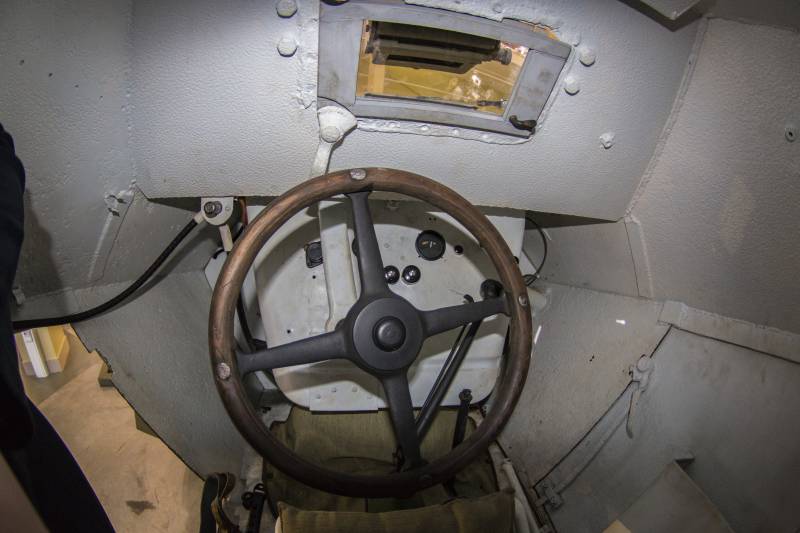
To be honest, it is not clear how the driver even saw anything at all in this embrasure. And if it rains or dirt, it’s also a mechanical wiper. Hand operated.
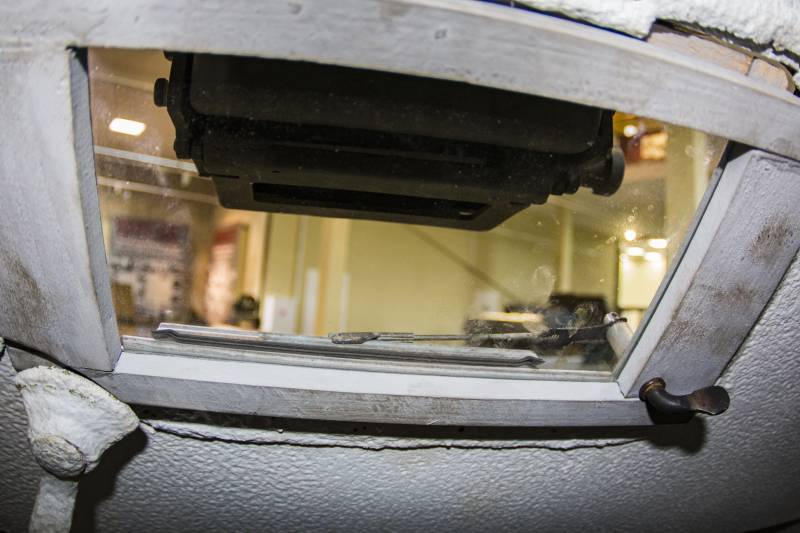

On the BA-64B, there were added two inspection hatches with armored valves in the upper side plates of the control compartment. The car commander could observe through the open top of the turret, or through the embrasure of the machine gun; In addition, in the side sheets of the tower there were two viewing slots with armored gates, armored visors and protective triplex glass.
On the BA-64B, a radio station 12РП or 12РПБ was installed, which differed from the first by the presence of a short tank type antenna and a headset instead of a telephone receiver, which increased the communication efficiency. Both variants of 12РП ensured the communication distance from a place in 8 — 15 km, depending on the terrain conditions, in telephone and to 30 - in telegraph; in motion, the communication range was reduced to 4 km, and the work of the radio station on the move in practice was possible only for 12РПБ.
The first BA-64 began to enter the army in May 1942, and in the summer of the same year they took part in the hostilities on the Bryansk and Voronezh fronts.
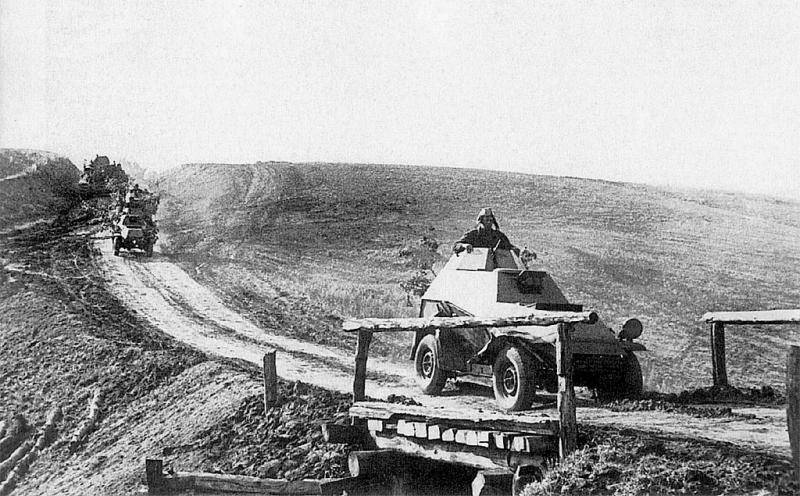
The main drawbacks of the BA-64 in battle were its insufficient firepower, as well as the difficulty of evacuating a damaged and ignited vehicle, which could have cost the crew life. However, mobile, maneuverable and possessing relatively high traffic armored car showed itself well in reconnaissance raids, amphibious operations, and even with the support and fire support of infantry.
The BA-64 proved to be especially effective when storming cities, thanks to the large angle of weapon elevation that allowed them to fire on the upper floors of buildings in street battles, which was unavailable for most other armored vehicles. In this role, they were widely used in the offensive operations of the final period of the war, up to the capture of Berlin.
Thanks to the same advantages, the BA-64 was also used to repel enemy attacks. aviation on the march. Although the probability of shooting down an enemy aircraft with fire from a diesel engine was very small, its defensive effect was not in doubt - the enemy was deprived of the freedom to maneuver at low altitudes, where an air attack from ground targets by firing from onboard cannons and machine guns is most deadly. Therefore, anti-aircraft fire from BA-64 on enemy aircraft contributed to a significant reduction in losses among the troops guarded by him.
By the end of World War II, 3314 armored vehicles of all types remained in the army, the overwhelming majority of BA-64 of both versions. After the war, the surviving BA-64 was soon written off, the BA-64B service in the Soviet Army also turned out to be relatively short. They were mainly used as combat trainers, at least until 1953.
Sources:
Nikonov V.D., Protasov A.V. Armored 1914 — 1990 wheeled vehicles.
Prochko E.M. BA-64 Armored Car.
Kolomiets M.V. Armor on wheels. History Soviet armored car 1925 — 1945's.
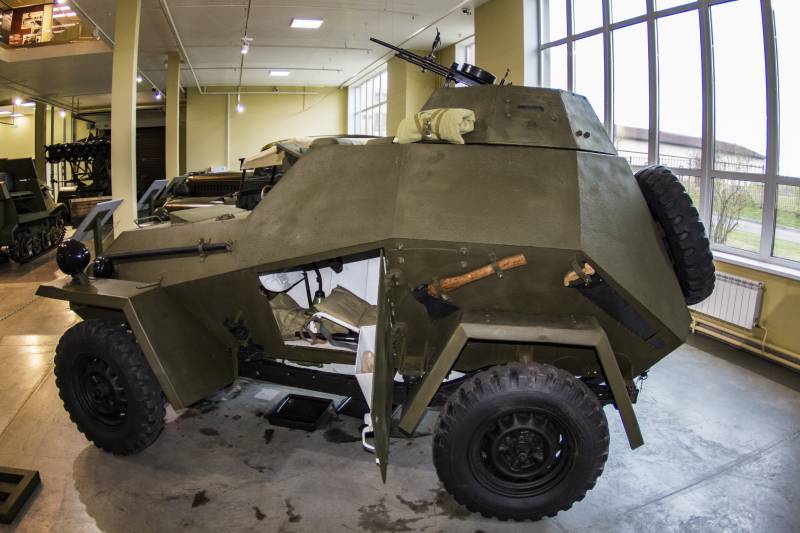
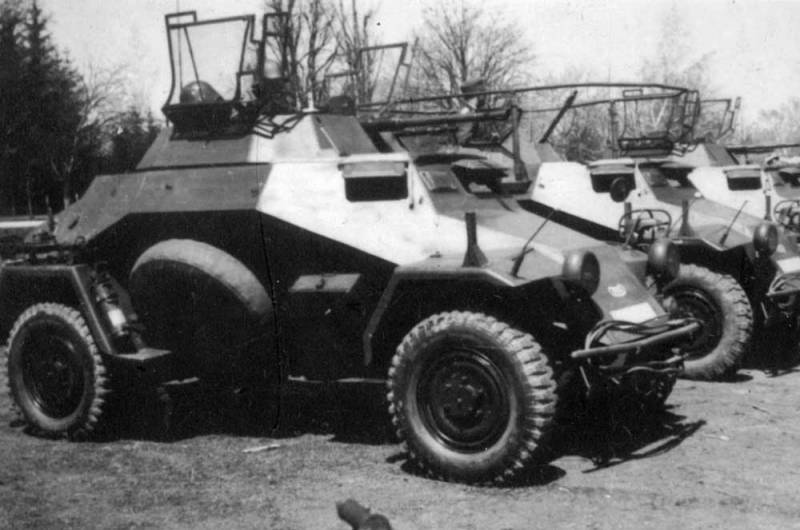
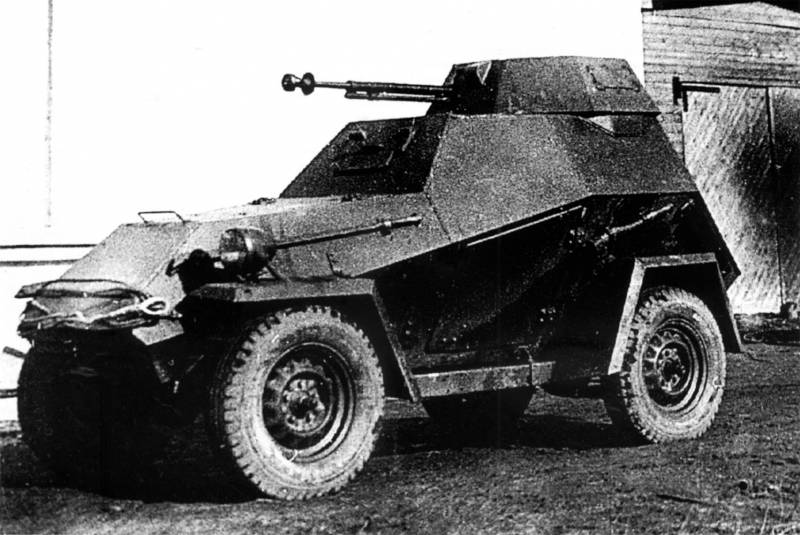
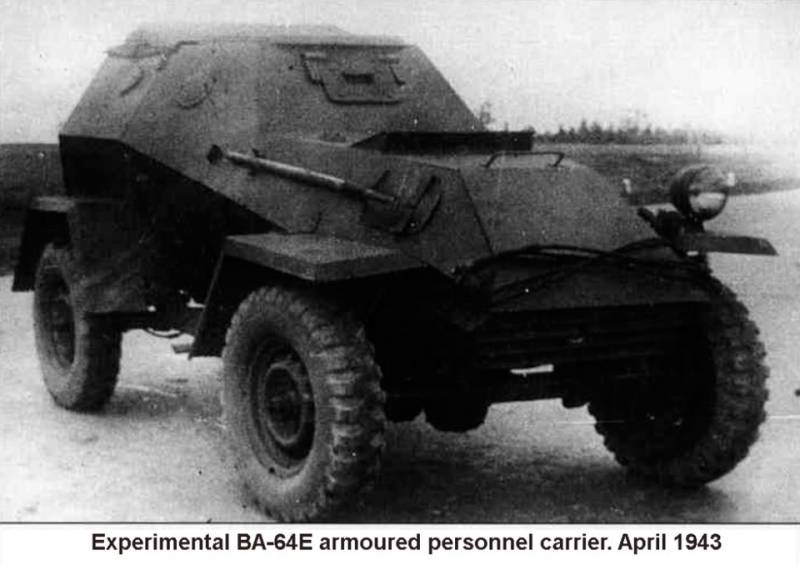
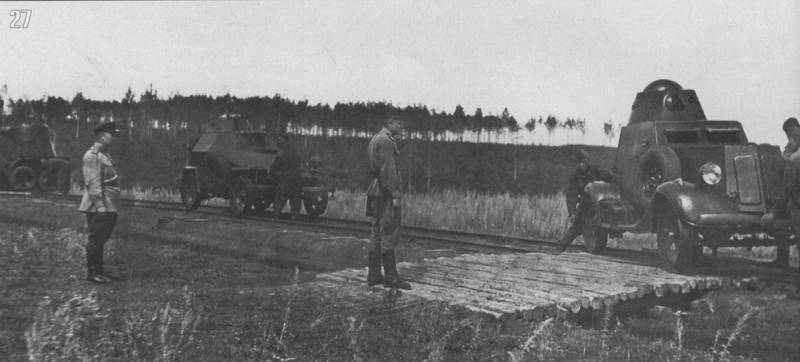
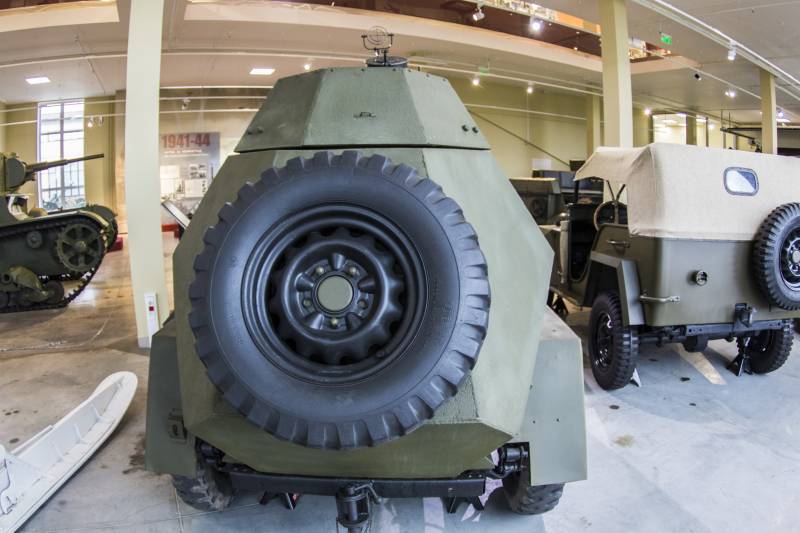
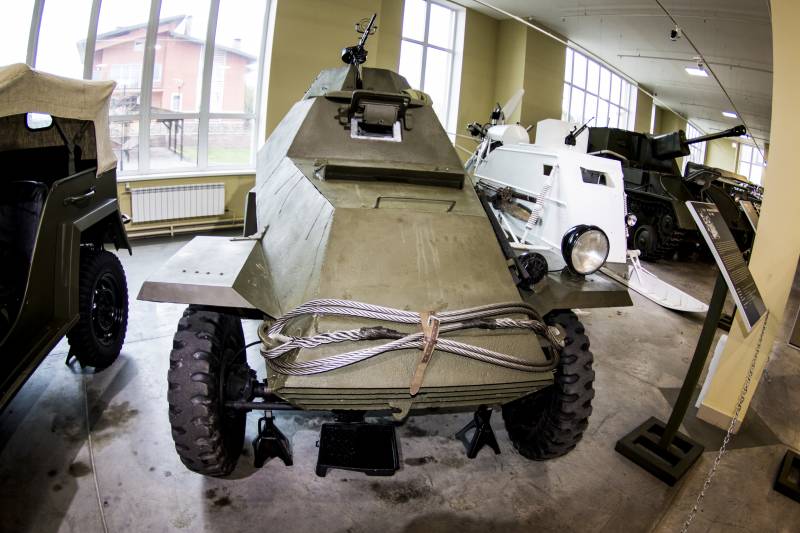
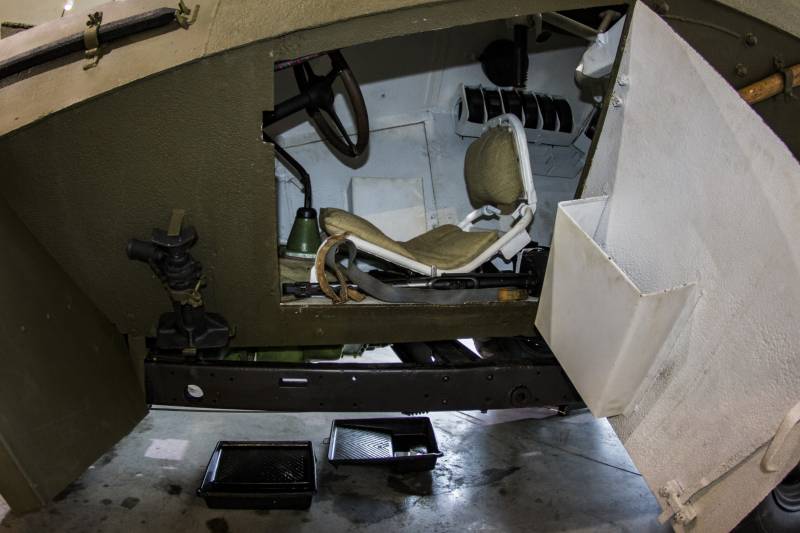
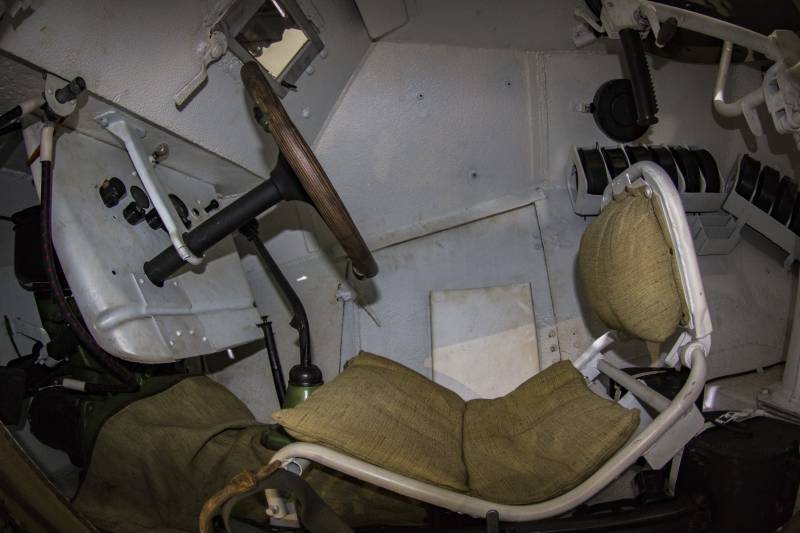
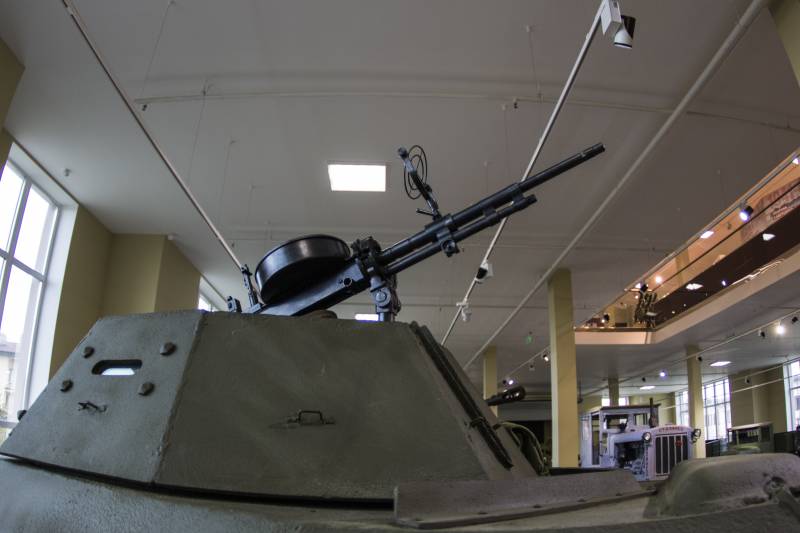
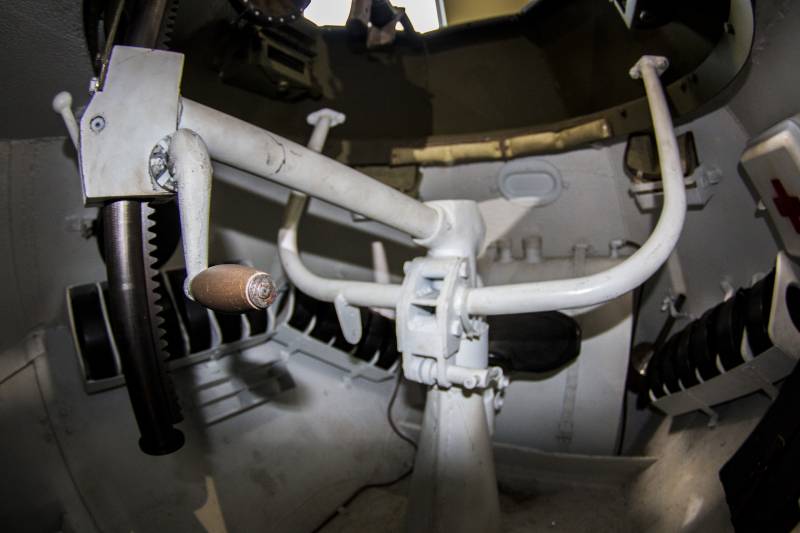
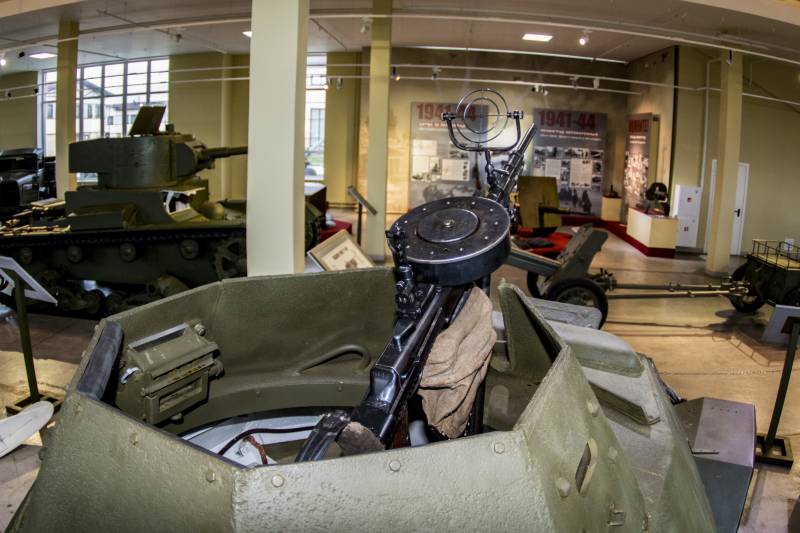
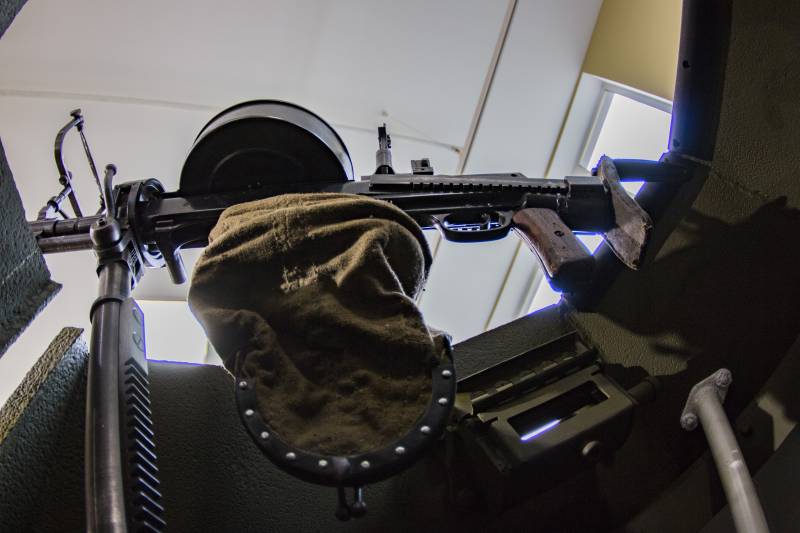
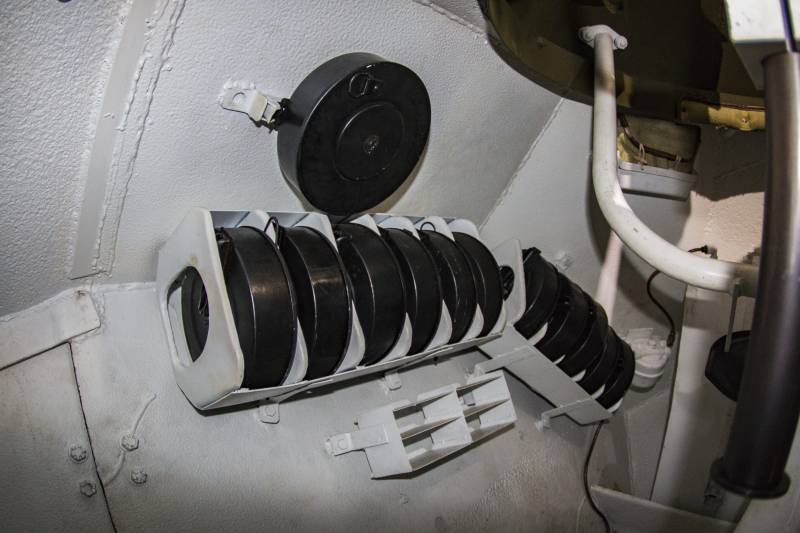
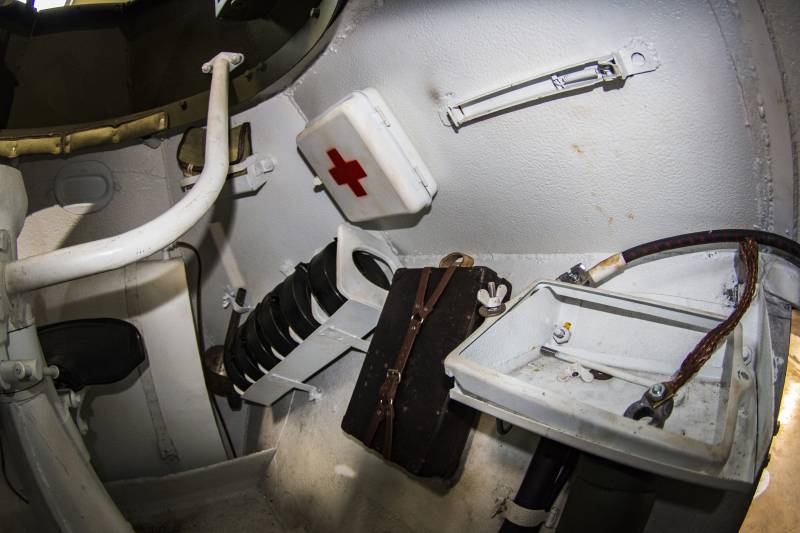
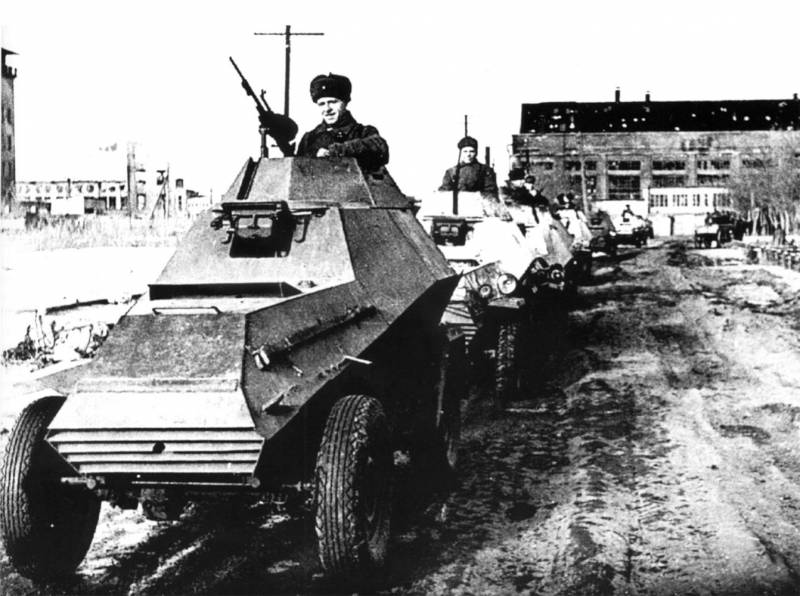
Information